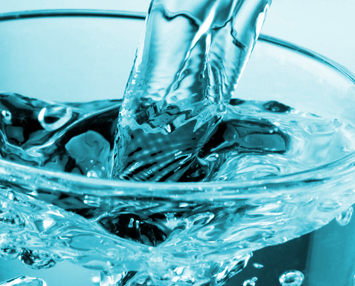Water forecasts coming
 March 22 is World Water Day, and Australian authorities say it is a chance to improve local water quality.
March 22 is World Water Day, and Australian authorities say it is a chance to improve local water quality.
Minister for Industry and Science Ed Husic and Minister for the Environment and Water Tanya Plibersek have announced a new CSIRO-led water research mission on World Water Day.
The research mission aims to provide a ‘weather service for water quality’, and deliver accurate, real-time water quality data monitoring and forecasting.
The AquaWatch Australia mission will see $83 million of investment from government and partnerships across research institutes and industry.
AquaWatch aims to build an extensive network of observation satellites and ground-based sensors to monitor the quality of Australia’s rivers and coastal and inland waterways with real-time data and predictive analysis.
This program will enable government, scientists and industry to monitor in real-time natural events such as toxic algal blooms, the contamination of drinking water, and excess runoff from irrigation.
More and faster information means action can be taken to address problems as they arise. This will ensure, for example, regional communities’ water supplies are safeguarded and kept safe for drinking and use.
CSIRO Chief Executive, Larry Marshall, says water is one of the most important and vital resources in Australia and across the globe.
“Imagine taking your family to the local swimming spot and being able to open your phone and check the water quality before they dive in. Or better yet, getting a forecast for the water quality days before you planned your family day out,” Dr Marshall said.
“Now imagine the impact of this if you were an environment manager, able to receive advance warning of the oxygen-depleted blackwater events often responsible for mass fish kills. Or an aquaculture farmer able to plan ahead for an impending algal bloom.
“Overseas, in places where people still face the risk of unsafe water for basic needs like drinking and sanitation, such a service could be a game-changer.
“The ingenuity behind AquaWatch is it integrates Earth observation with other science capabilities like in-situ sensing, ecosystem modelling, engineering, data science and artificial intelligence.”
Working with a range of implementation partners, AquaWatch will extend from rivers to coasts, with the ability to monitor bays, coastal wetlands, aquaculture farming, mangrove forests and coral reefs, including the Great Barrier Reef.
SmartSat CRC Chief Executive Officer, Andy Koronios, said that space technology will be a key aspect of AquaWatch and essential to developing an accurate understanding of Australia’s water systems.
"As the AquaWatch foundational partner, SmartSat’s collaboration with CSIRO has established a number of key pilot projects aimed at developing technologies to effectively monitor and manage this essential resource,” Professor Koronios said.
“The initial suite of co-operative projects brings together research partners, government and industry and cover integrated ground-to-space water quality monitoring systems for inland, estuarine and near-coastal water bodies.
“The AquaWatch partnership is a prime example of the benefits of cross-agency collaboration and demonstrates how much we are able to achieve when we combine our efforts and know-how for the benefits of all Australians.
“This collaborative effort to harness the data gathered from satellites will play an essential role in safeguarding our future water supply and improving our natural environments,” he said.
Data from both the sensors in the water and on the satellites will then be integrated at a central data hub where CSIRO’s capability in data analysis and AI can provide forecasts a few days ahead.
AquaWatch already has six pilot sites set up around the country to test the system for several uses such as monitoring toxic blue-green algae blooms at Lake Tuggeranong in Canberra, a popular spot for recreation.
As well as monitoring the health of inland rivers, dams and waterways, the AquaWatch system will also potentially be able to monitor coastal wetlands, aquaculture farms, riparian vegetation and terrestrial biodiversity, mine sites, mangroves and coral reef environments.
Six pilot sites have already been established with partners in Australia and another five internationally in Chile, Colombia, Malaysia, the United States and Vietnam.








 Print
Print